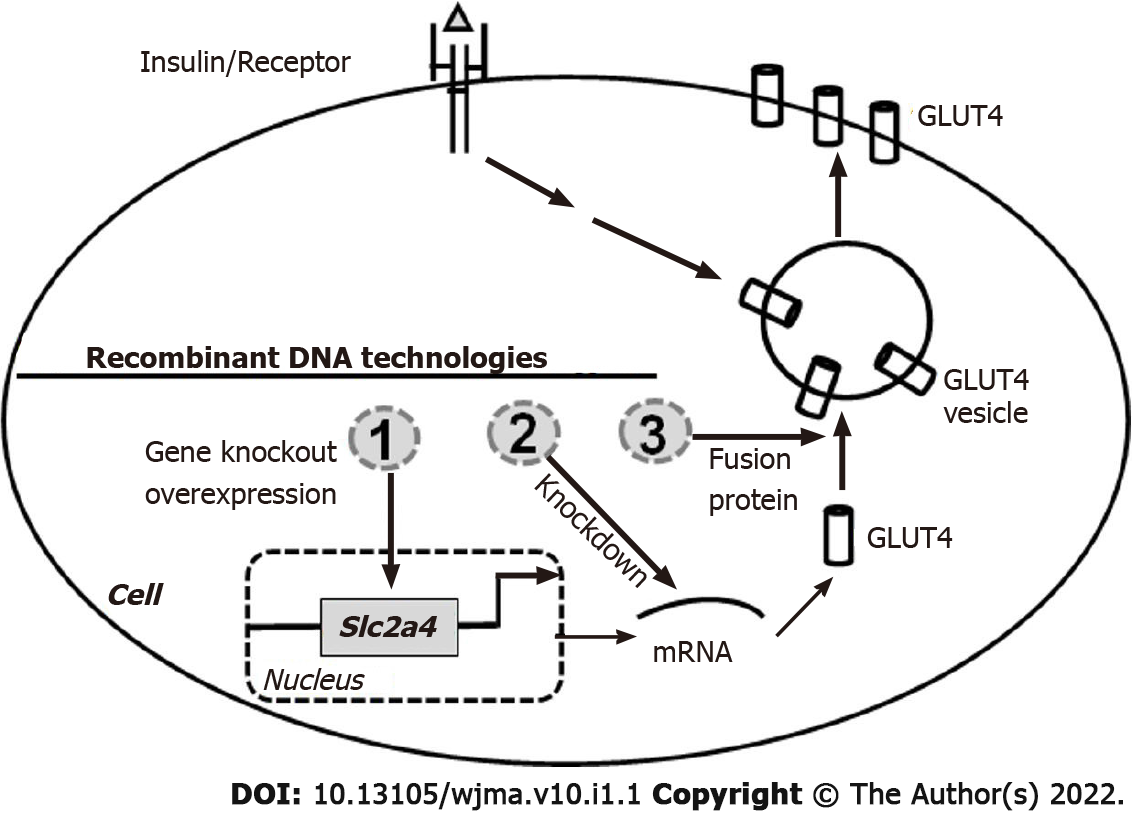Copyright
©The Author(s) 2022.
World J Meta-Anal. Feb 28, 2022; 10(1): 1-11
Published online Feb 28, 2022. doi: 10.13105/wjma.v10.i1.1
Published online Feb 28, 2022. doi: 10.13105/wjma.v10.i1.1
Figure 1 Recombinant DNA technologies used in the study of glucose transporter 4 functions and its translocation mechanism.
Slc2a4 gene is transcribed into mRNA, which is translated into glucose transporter 4 (GLUT4) protein. The binding of insulin to its receptor leads to the activation of insulin signaling system, which facilitates the movement of GLUT4 from its intracellular location to the cell membrane, and in turn the entry of glucose in the cells. Recombinant DNA technologies have been used to alter gene expression level (1), reduce mRNA translation (2) and tracing intracellular movement of GLUT4 protein (3). 1. Slc2a4 gene has been deleted in the whole body via homologous recombination and in individual tissues or cells via Cre-LoxP system driven by tissue specific promoters. In addition, transgenic overexpression of GLUT4 in whole body or specific tissues and cells has been done using mini gene or SLC2A4 cDNA driven by different promoters, respectively. 2. The GLUT4 protein is knocked down using short-hairpin RNA under the control of different promoters to interfere the translation process. 3. Fusion or tagged GLUT4 has been created to study the insulin-stimulated GLUT4 translocation mechanism using fluorescent microscopy, and immune assays.
- Citation: Wang TN, Hu XG, Chen GX. Uses of knockout, knockdown, and transgenic models in the studies of glucose transporter 4. World J Meta-Anal 2022; 10(1): 1-11
- URL: https://www.wjgnet.com/2308-3840/full/v10/i1/1.htm
- DOI: https://dx.doi.org/10.13105/wjma.v10.i1.1













